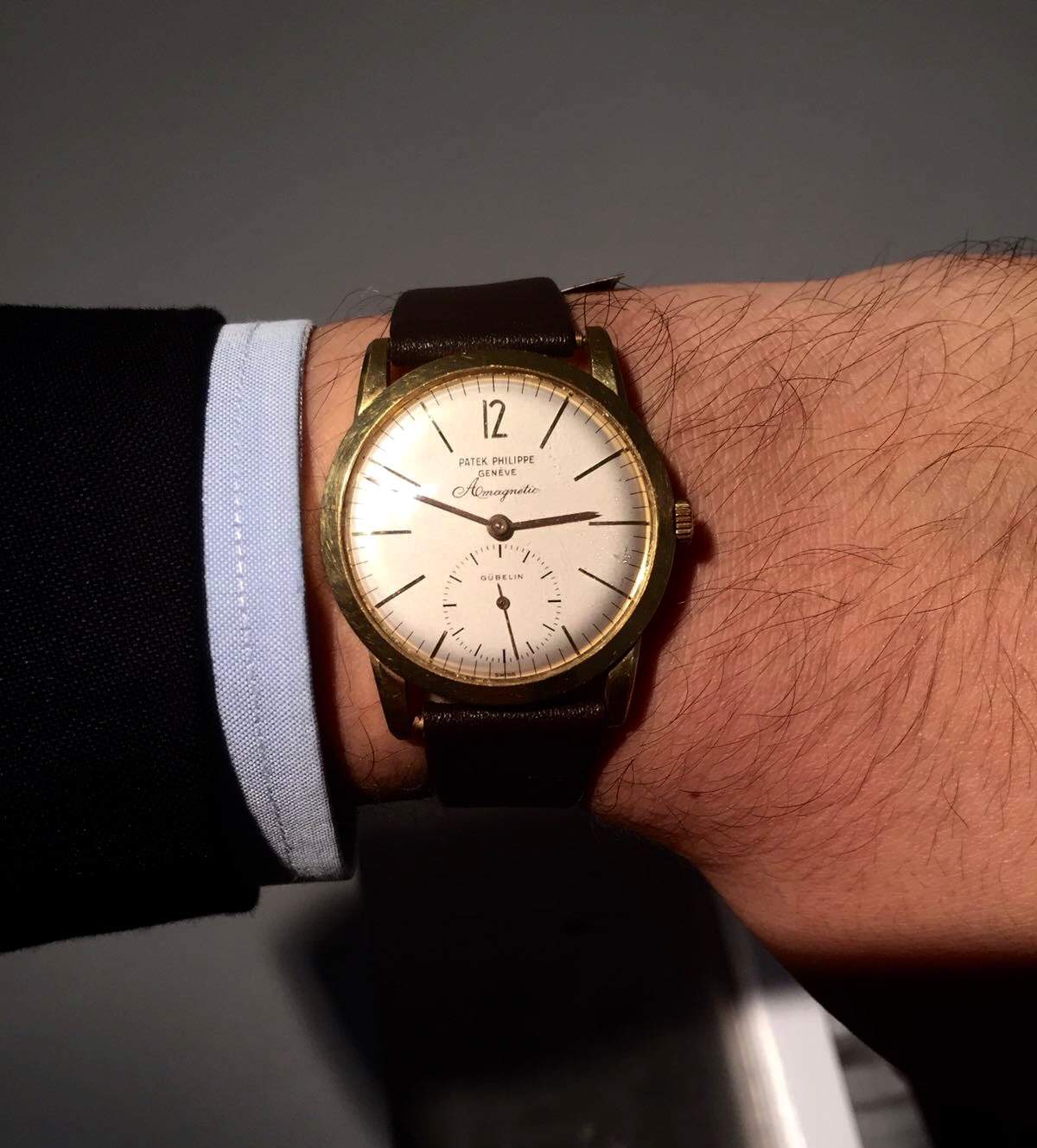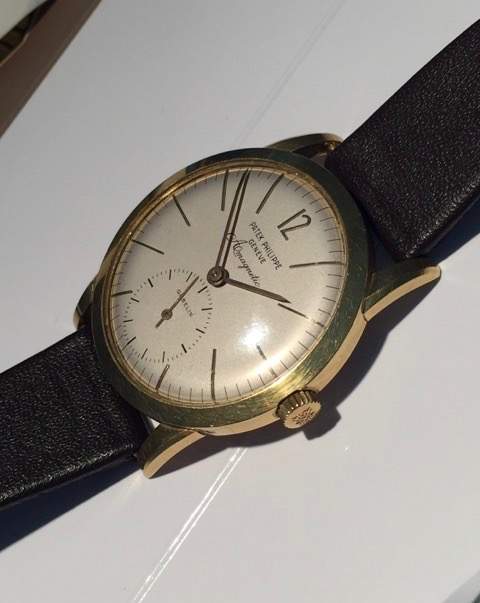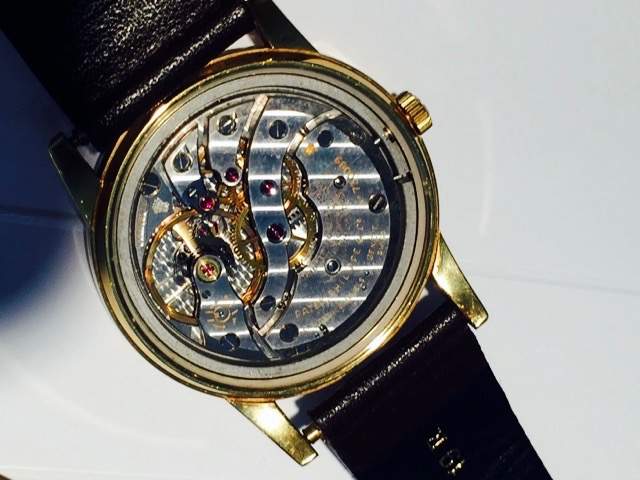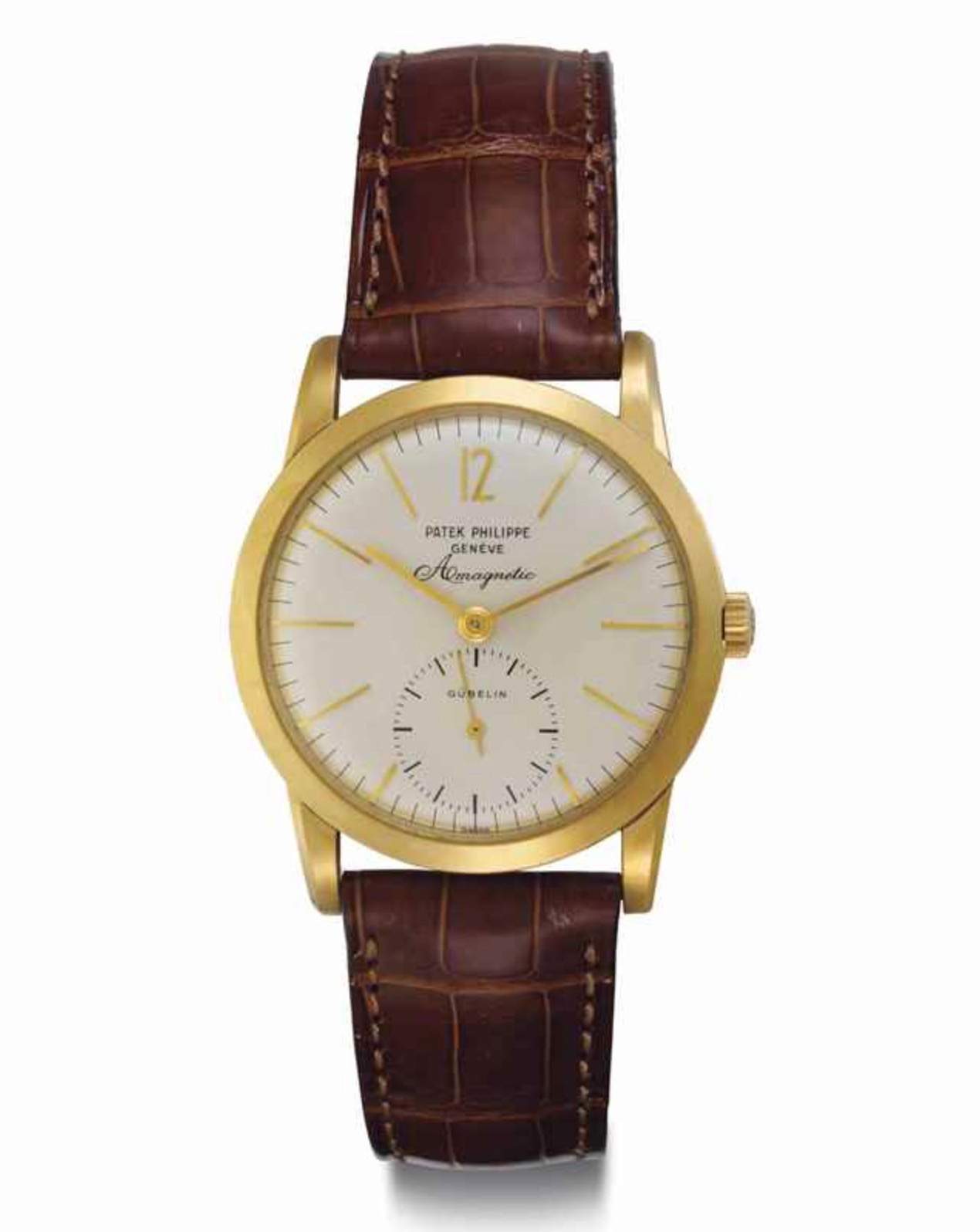Insight Collectors Series Part 5: Learning by doing Part – Case study II
Fine WatchesCollector's InsightIn the first part of this case study, I told you what I did right in regards to collecting Patek. Allow me to share what went wrong too.
This post is a perfect case study of all what can go wrong in collecting. I was for the most part at fault but I also partially put the blame on the auction house. Then there was certainly some bad luck involved. But for the most part I am to blame – this is clear.
In watch collecting sometimes you discover a watch by pure accident – as was the case with this one.
At a preview in Geneva, I was looking at other watches, when this Patek Amagnetic caught my eye. It is a Patek 2570-1. You can read about the watch here – I did an in-depth report on this watch – as I firmly well in love with it. The super thick lugs (I have never seen an Amagnetic Patek watch with better lugs) this case was for sure unpolished – together with the dial and hands that perfectly matched the dial – it was a dream watch no doubt.
I had done my homework on the watch – and knew – this was my first gold Patek that I needed. I had to have it. Irrespective of the cost. This watch had my name written all over it.
I have been buying at auctions for many years now and am pretty well versed at knowing how to bid in a clever manner.
Everything initially went right.
I knew there was going to be exceptional interest for this watch. So, I waited until the bidding died down and the price had reached an already unheard of level. There were initially 5-6 different bidders, but when the price reached over $85’000 most of the bidders disappeared. Just before the hammer went down, I placed my online bid. I had not planned on bidding that amount but I wanted this watch at all costs and was sure to get it. But the bidder who had been bidding came back with one more bid. I was surprised by this and knew right away that I might get into a bidding war. Before I could recover from the shock counter bid at an unheard of USD 95’000 – the lot sold. With only one bid I was the under bidder.
At first, I thought I did the right thing. I walked away after already placing an unheard of strong bid. But after some reflection I quickly realised I made some pretty large mistakes. I count four of them:
- The first mistake I made, believe it or not, was bidding online: Why? Because the price I bid on was $90’000. After the unexpected bid of the other collector I was forced to bid at $100’000 – a psychological level I was not prepared to go above (which was extremely silly of me). Had I bid per telephone I could have decreased my bid and asked to bid at $97’500 – in all likelihood the auctioneer would have accepted this. This would have forced my other bidder to make the important $100’000 bid and the advantage would have been in my court. Because I was bidding online I could not do that.
- The second error I made was in the estimate of what this watch was worth: I did not really have a good comparison as only a pink gold version had sold with original certificate at Phillips for CHF 150’000. All the other 2570-1 that had sold recently had a more common explorer dial and thus were not good comparisons. Things got further complicated (and here I partially blame the auction house) as the estimate of the watch was extremely and unrealistically low at $15-25’000. So, the mistake of mine was to focus on the estimate (which I knew was not accurate to begin with). I knew the correct estimate was substantially above the Christies estimate (I placed it at $30-40’000); but nonetheless the very low estimate was always in my back of my mind. It just made bids at $90’000 look unrealistically high. I also compared it to steel 3417, also an Amagnetic reference which fetch strong prices. This was my big mistake I made, and leads me to my third point below.
- The third fault I committed – was thinking of past prices: I was focused on what the watch is worth in relation to its past history. This is common mistake investors in financial markets also do. We look in the past instead of what might be in the future. This was my fatal mistake. Instead, what I should have done was focus on the condition of this 2570-1, which was 10/10.
- The fourth and biggest mistake I made – not thinking out of the box: I was focused on similar references so 3417 and other material (so pink gold) and other dial 2570-1. Instead what I should have done was think outside the box. I should have asked myself the following question: What is an important time only reference, with a beautiful movement, made in very limited quantities worth from Patek in the 1950s? Irrespective of models? Take for example a nice 2526 with Enamel dial. A superb example can reach $100’000, especially with a retailer signature. I also could have compared it to the Patek 2577. Also, a fine 3417 in steel with a double signature is worth $100 -125’000 today. A 2570-1 is significantly rarer and thus even a price of $120 -150’000 is appropriate. Next time I see a great watch I will not only think about similar type models within the same reference or family of reference, but also similar and rare time only watches of the same period (3428, 2526, 2577) to make my comparative analysis. This was the big mistake. I should have thought outside of the box. I just learned one of the most valuable lessons in watch collecting the hard way.
Concluding thoughts
I really regret not buying this 2570-1. It was a trophy watch and one in this condition will not come along very quickly again.
If there is any consolation – it is that I did a lot of things right. I recognised the quality of the watch. I was prepared to bid a very high amount. With only one bid I managed to be the underbidder and I gave it quite a good shot. I honestly did not expect a bidder to return. At USD 90’000 it would have set a world record for a gold only 2570-1.
However, I should have been more persistent. More aggressive. I have always said that you cannot pay enough for trophy watches. It is a rule I always believed it and also acted upon. I have in the past set numerous world records for many references, 1675 Rolex, 6238 Rolex, 6205 Rolex, 6204 Rolex. I am normally not afraid to make bold and aggressive bets. My mistake was that I miscalculated what this watch should be worth and was irritated by the very low auction house estimate placed on the watch.
This watch, the 2570-1 certainly merited a huge and aggressive bid. My counter bidder in the end understood this very well – and I am happy the watch is going to a good home (I do happen to know the collector, at least via social media).
In defeat, there are valuable lessons to be learned. Believe me, I may not have this Patek in my collection but I sure as hell will apply my learning lesson very well when the next opportunity arises. I will be thinking outside the box.
And the rest of my fate on any future purchase will be up to the horological gods to decide.
For more on Patek Amagnetics like 3417 and 2570 please see my post here.
Allow me to share some more pictures of this dream watch. (All pictures credit: Eric Wind / Christies).
Here a wristshot. Notice the lugs that look so full as when if it left the Patek factory yesterday. This was a trophy asset. And the rule with trophy assets is simple: Keep your paddle up in the air until it is yours.

Another view of this superb 2570. The best I have ever seen in my seven years of collecting now.

The movement is a dream with guillaume balance wheel partially visible.

Here is the same watch as it appeared for the Christies catalogue. For the full original listing of the watch please see here.

